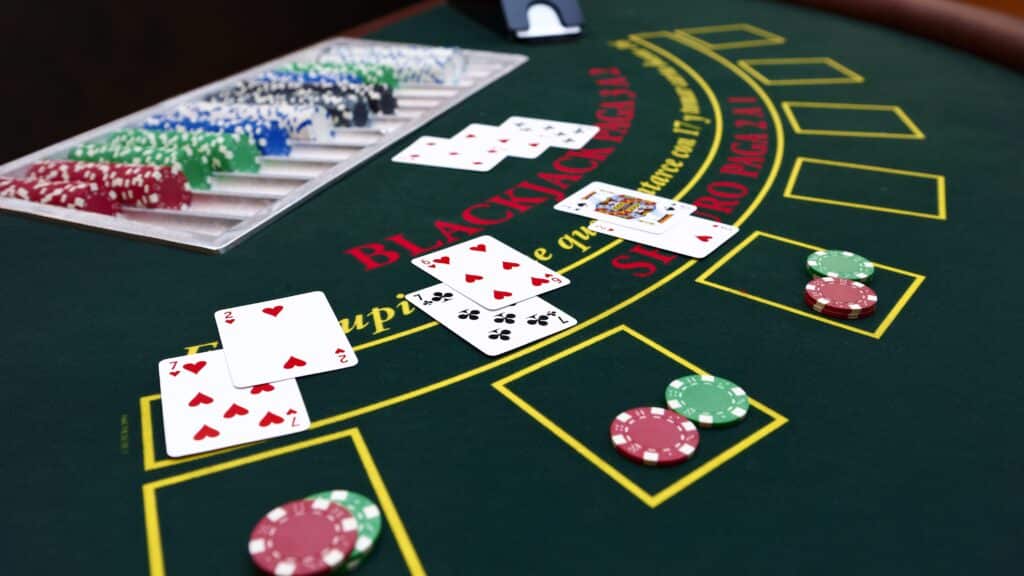Blackjack is a game of skill, strategy, and chance. To maximize your chances of winning, understanding and effectively utilizing Blackjack strategy tables can be crucial. These tables provide a structured approach to decision-making based on the dealer’s upcard and your hand total. In this article, we will explore how to use Blackjack strategy tables effectively, the benefits they offer, and how they can enhance your overall gameplay.
Introduction
Blackjack strategy tables are charts that outline the optimal moves based on the player’s hand and the dealer’s upcard. These tables are designed to minimize the house edge and help players make informed decisions during the game. By following a strategy table, players can improve their chances of winning and make the most of their Blackjack experience.
What is a Blackjack Strategy Table?
A Blackjack strategy table is a reference guide that provides recommendations for every possible hand combination. It shows the best move to make—whether to hit, stand, double down, or split—based on the player’s total and the dealer’s upcard.
Components of a Blackjack Strategy Table
- Player’s Hand Total: The table lists all possible hand totals a player can have, typically ranging from 5 to 21.
- Dealer’s Upcard: The table includes columns for each possible dealer upcard, from 2 through Ace.
- Recommended Action: The table specifies the optimal action for each combination of player hand total and dealer upcard.
How to Use a Blackjack Strategy Table
1. Obtain a Strategy Table
Before using a Blackjack strategy table, ensure you have the correct version for the specific rules of the game you are playing. Different rule variations, such as the number of decks or whether the dealer hits or stands on a soft 17, may require different strategy tables.
2. Understand the Table Layout
Blackjack strategy tables are usually organized in a grid format. The rows represent the player’s hand total, while the columns represent the dealer’s upcard. The intersection of the row and column provides the recommended action.
- Hit: Draw another card.
- Stand: Keep your current hand.
- Double Down: Double your bet and receive one more card.
- Split: Separate your hand into two hands and continue playing each individually.
3. Match Your Hand to the Table
During gameplay, compare your hand total and the dealer’s upcard to the strategy table.
- Find Your Hand Total: Locate your hand total on the left side of the table.
- Locate the Dealer’s Upcard: Find the dealer’s upcard along the top of the table.
- Read the Recommended Action: Follow the intersection point to see the recommended action.
4. Implement the Strategy
Make your move based on the strategy table’s recommendation. For example, if your hand total is 16 and the dealer’s upcard is 7, and the table advises to stand, you should follow that advice.
Benefits of Using a Blackjack Strategy Table
1. Reduces the House Edge
One of the primary benefits of using a Blackjack strategy table is its ability to reduce the house edge. By following the table’s recommendations, players make statistically optimal decisions, which minimizes the casino’s advantage.
2. Increases Consistency
A strategy table provides a consistent approach to decision-making. By adhering to the table’s guidelines, players avoid impulsive decisions and maintain a systematic approach to the game.
3. Enhances Decision-Making
Strategy tables simplify the decision-making process by providing clear recommendations for every possible hand. This reduces the likelihood of making errors based on emotion or uncertainty.
4. Supports Effective Bankroll Management
Using a strategy table can help manage your bankroll more effectively. By following the optimal strategy, players can minimize losses and increase the likelihood of making profitable decisions.
Examples of Blackjack Strategy Table Use
Example 1: Basic Hand Totals
- Hand Total 12 vs. Dealer’s 4: According to the strategy table, the optimal move is to stand. This decision is based on the likelihood that the dealer will bust with a low upcard.
Example 2: Soft Hands
- Soft 17 (Ace-6) vs. Dealer’s 3: The strategy table recommends doubling down. This is because a soft hand provides a good opportunity to increase your bet with minimal risk of busting.
Example 3: Splitting Pairs
- Pair of 8s vs. Dealer’s 6: The table suggests splitting the pair of 8s. Splitting can improve the chances of getting higher totals on each hand and potentially winning both.
Adapting Strategy Tables to Different Game Variations
Different Blackjack games may have variations in rules that affect strategy. It’s important to use the correct strategy table for the specific game you’re playing.
1. Number of Decks
- Single Deck vs. Multi-Deck Games: Strategy tables can vary based on the number of decks used in the game. Ensure you use a table that matches the deck configuration.
2. Dealer Rules
- Dealer Hits or Stands on Soft 17: Some games have specific rules about whether the dealer hits or stands on a soft 17. Use a strategy table that reflects these rules.
3. Doubling and Splitting Rules
- Allowed Doubling and Splitting Options: Check if the game allows doubling after splitting or other specific rules. Adjust your strategy table accordingly.
Conclusion
Using a Blackjack strategy table effectively can significantly enhance your gameplay and improve your chances of winning. By understanding the table’s layout, applying its recommendations consistently, and adapting to different game variations, you can make more informed decisions and reduce the house edge.
Remember, while a strategy table provides a structured approach to Blackjack, it cannot guarantee success. Combining strategy table use with sound bankroll management and an understanding of the game’s nuances will contribute to a more enjoyable and potentially profitable Blackjack experience.
By integrating these strategies into your gameplay, you can approach Blackjack with confidence and make the most of every hand.



